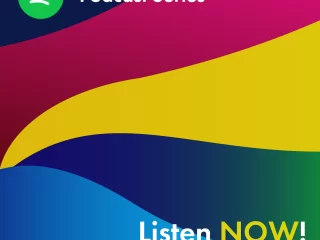More media interviews are now being done via video. This has its pros and cons. In the plus category, it helps to establish a better connection with a journalist. The rapport building seems to happen more naturally with the benefit of seeing each other, rather than the interview taking place over the phone. But it can also be incredibly awkward if you’re not extremely well-prepared.
As we continue to find our footing with this more heavily relied upon communication medium, we want to help company spokespeople adjust to this new request and make the most of any facetime—even if it’s virtual— with the media.
Here are three things to do to help make sure your next video interview is a success.
First impressions are everything. We can’t stress enough how important it is to invest in a selfie light. Many journalists are now using clips from video interviews in their articles or on social media. Dress to impress. In a video interview, you are both seen and heard. Clear the clutter around you and make sure no personal items are in the camera shot. Conduct the interview in a space where you know you’ll have total silence with no interruptions. Smile and speak clearly with confidence. Be mindful of your body language. Be polite, respect the journalist’s time and thank them at the beginning and end of the interview for the opportunity.
Prep is essential. There’s no winging it with a video interview. A tech check at least 10 minutes prior to the video call is a must. Make sure your picture quality and lighting are good and the sound is working. A journalist telling you, “I think you’re on mute,” is no way to kick off the interview.
Work closely with your b2b tech PR team to prepare talking points and anticipate questions and topics that may be explored during your discussion. Focus on conveying two key messages to the journalist. Work backwards and ask: “what do I want the takeaway to be,” “what message do I want the audience to understand about ABC.” This keeps your talking points aligned with the interview goal. You want to be quoted so keep your remarks succinct and impactful while also citing data and facts. This takes practice. Taking the time to write out some soundbites and reading them out loud is extremely helpful for ensuring you’re striking the right tone and delivering valuable insights.
Keep in mind that journalists are no longer just interested in your company news or product particulars. You will be asked about: your company’s remote work policy, hybrid approach, how your company has done during lockdowns, what you’re doing to support employees’ mental health and well-being, how you’re fostering diversity, equality and inclusion. These subjects are all fair game and open for discussion with journalists. Lean on your PR team to help you prepare so you can avoid a situation where you’re caught off guard by a topic.
Be honest. If you don’t know the answer to a question, be honest, “I don’t know” is the best answer followed by “I’ll look into this” and send a follow up email with an answer by a certain date/time. You may not have the benefit of a PR person on the line with you so it’s even more important to jot down items that need following up. Check in with your b2b tech PR team immediately following the call so they can help you track down answers and provide supporting materials to make sure the journalist gets what they need as quickly as possible.
Video media interviews are here to stay. Our TechComms team can provide you and your team with media training to help you better leverage this type of media outreach and build stronger relationships with the media. Please contact TechComms, a b2b tech marketing and communications agency on + 44 (0) 203 322 8928.



